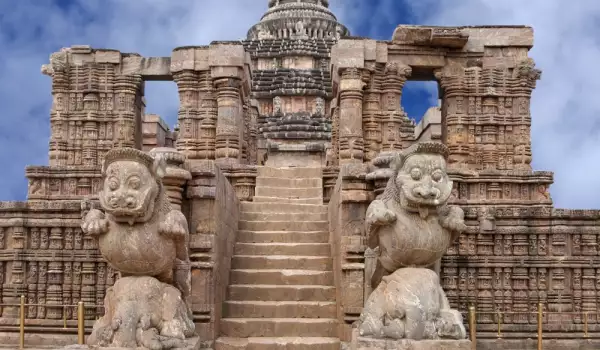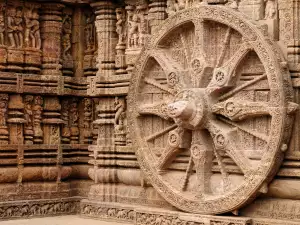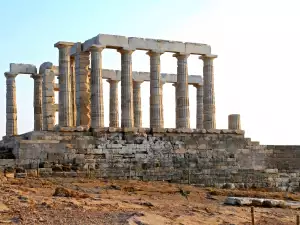Konark Sun Temple

Konark Sun Temple, commonly known as Konark is a high point in architectural construction of Orissa and one of the most magnificent examples of religious architecture in the world. Today, Konark is the most popular tourist destination in Orissa, located on the east coast of India, from 1984 onwards it is listed as a UNESCO World Heritage Site. Konark Sun Temple is located on the Bay of Bengal, 35 km north of Puri.
Konark Sun Temple is entirely dedicated to Sun God Surya and is known as the Black Pagoda. Built in the shape of a giant chariot, it is known for its exquisite stone carvings that are carved along its entire structure. Along with the Taj Mahal, Golden Temple Harmandir Sahib and several other sites in the country, Konark was named one of the seven wonders of India.
Konark was built in 1250 by King Narasimhadeva in gratitude for the victories over the invasion of Muslims in these lands. The locals know a better legend stating that Konark possesses a very strong aura. It is due to two very powerful magnets that were built into the tower. Their strength was so great that the royal throne was allowed to stay in the air.
European mariners sailing off the temple used it for navigation. From them comes the nickname of Konark - the Black Pagoda. Skippers accused the for the because frequent shipwrecks, which happened on this coast. It is assumed that it is due to the huge magnets that attract vessels.
In the 15th century Sun Temple of Konark is extremely damaged after an invasion by Muslims. The main statue in the temple has been hidden in Puri by priests, but much of the sanctuary was destroyed. Then the natural forces finish the job of the Muslims. By the 20th century Konark remains engulfed in sand and weeds. Under British rule began the excavation of the temple, and in 1924 Count Ronald Shay declared Konark "one of the most amazing buildings in India."
Konark is extremely beautiful and unique with the form of a chariot - built with 12 pairs of carved stone blocks for wheels and seven horses spiking up. Only one of the stallions, however, survived with structure intact. Reaching 261 m height, Konark is taken as a symbol of the Wheel of Life.

Time was one of the things controlled by the Sun God. The seven horses pull the temple to the east, to symbolize the dawn seven days a week. In turn 12 wheels correspond to the months of the year and the number of their spokes, which is 8, is considered a symbol of the eight stages of the life of the perfect woman.
The main portal of Konark looks east to the sea and has an intriguing front room, which is later addition. This ritual hall is called Bhogamandapa and was probably used for ritual dances, judging by the walls on which are carved sculptures of musicians and dancers in erotic scenes.
All around Konark are geometric floral compositions. The tomb itself is largely in ruins, but of precious objects and decorations that can be seen in the Museum of the Sun God. Every inch of the temple is covered with sculptures, bordering with perfection.
There can be seen gods, divine and human musicians, dancers, lovers, family and numerous scenes of the palace royalty, birds, animals, mythological creatures, etc. Around 2000 images of elephants are carved at the base of the main temple of Konark. Particularly interesting are the erotic scenes that have all possible grace and beauty.















